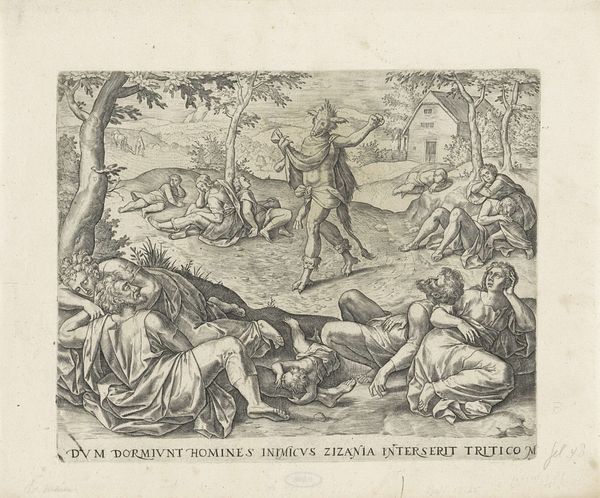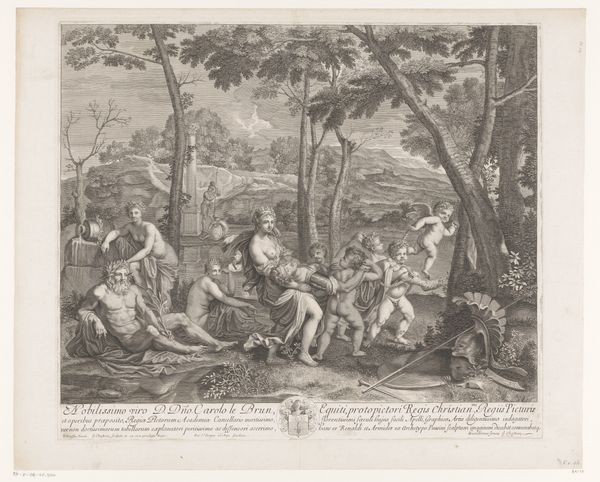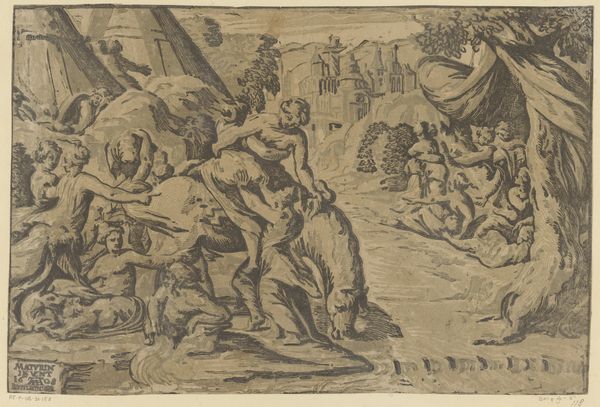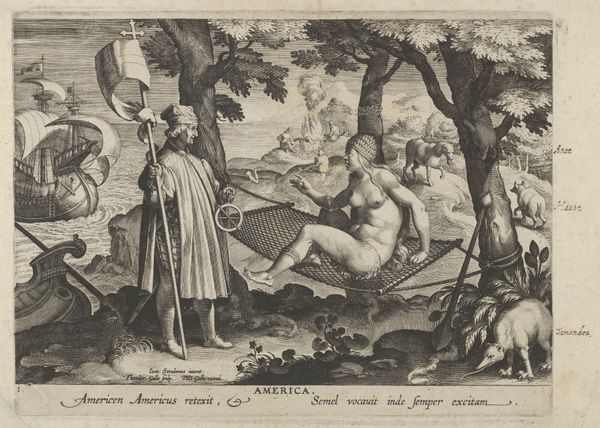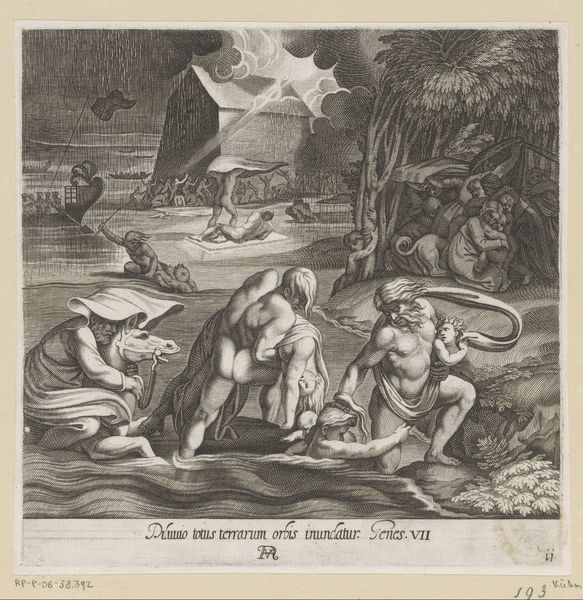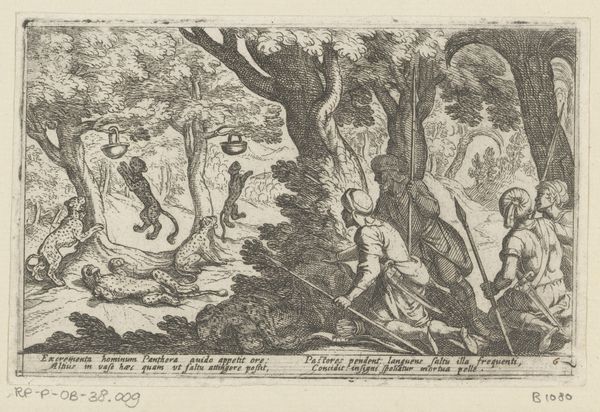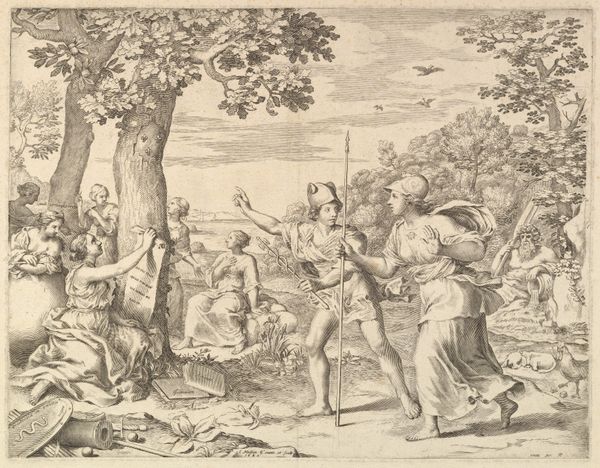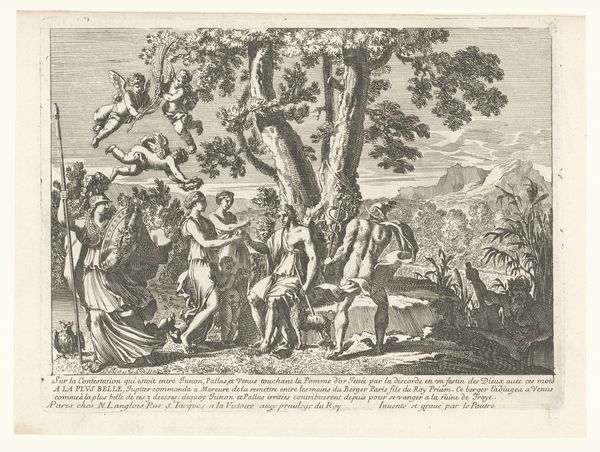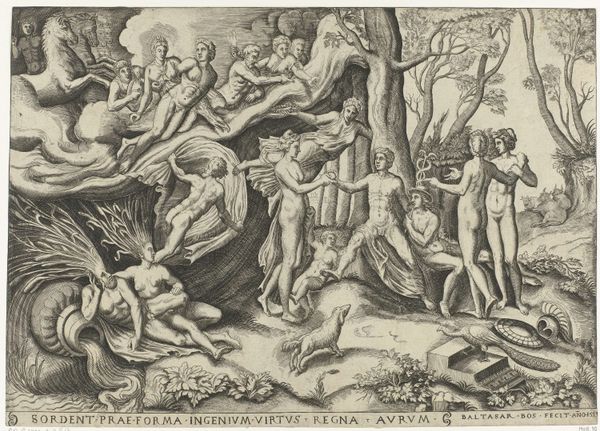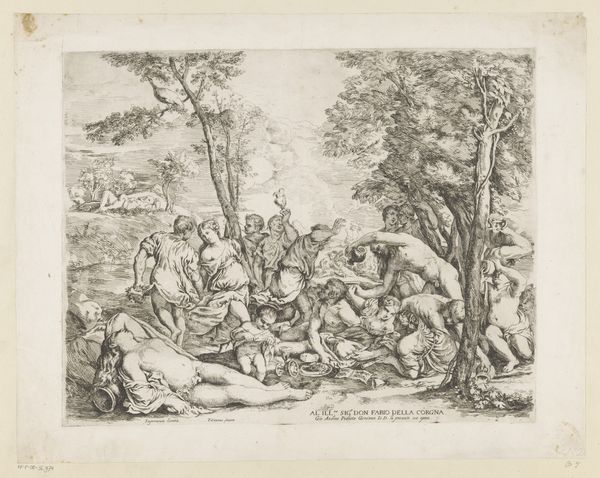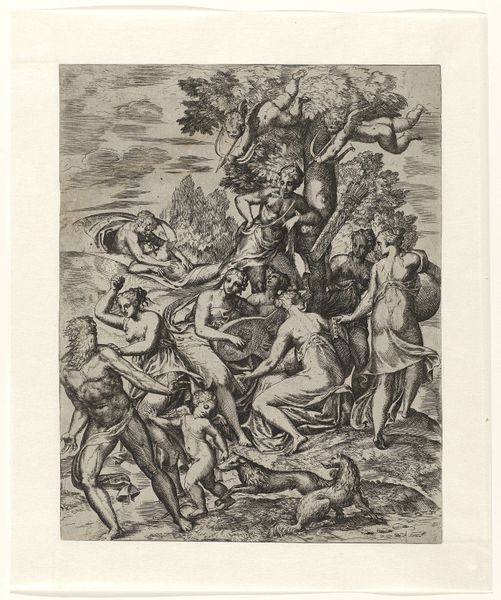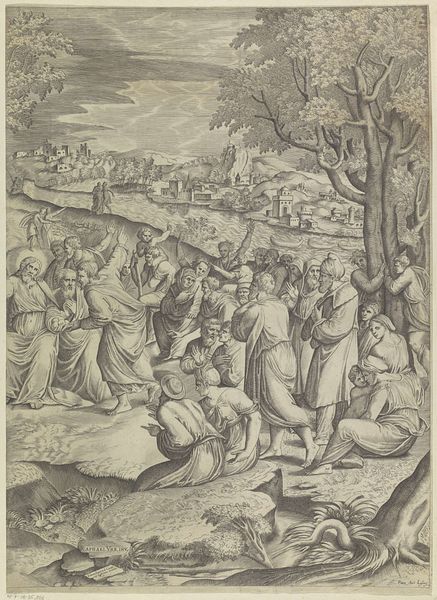
etching, engraving
#
allegory
#
etching
#
mannerism
#
figuration
#
line
#
history-painting
#
italian-renaissance
#
engraving
Dimensions: height 104 mm, width 117 mm
Copyright: Rijks Museum: Open Domain
Curator: Here in gallery six, we are observing “Metamorfose van de Pierides,” an etching by Antonio Tempesta, dating back to 1606. Tempesta was working at a time when the late Italian Renaissance was moving towards Mannerism. Editor: My first impression is the striking visual division. A group of women on the left, opposed to the transformation taking place on the right, connected by one standing woman making gestures toward both sides. The transformation appears almost violent, but is somewhat ameliorated by the landscape that the transformation is taking place within. Curator: It’s one of a series of prints illustrating Ovid’s "Metamorphoses," specifically, it portrays the story of the Pierides, women who dared to challenge the Muses to a musical contest and, upon losing, were punished by being turned into magpies. It's fascinating to consider the intersection of power, gender, and artistic expression within this narrative. Editor: And we see Tempesta using symbolic language to express that. The Muses are associated with knowledge, culture, and the patriarchy. The birds embody a different mode of being, an animal existence lacking the refined characteristics imposed by society. To be transformed is to be removed from culture. They have moved to their natural existence. Curator: That reminds me of contemporary interpretations of such stories, emphasizing themes of resistance against established norms. By challenging the Muses, the Pierides threatened the existing power dynamics, resulting in their transformation. But at the same time, that act of defiance is what cemented their stories for ages to come, a reminder to other women of their transgression. Editor: Yes, transgression. The symbolism of the magpie is so fitting—associated with mimicry and petty theft. In transforming the women into these creatures, Tempesta highlights, I think, their loss of unique artistic voice, replaced with mere imitation, doomed to wander on the periphery. Curator: It also speaks volumes about the penalties exacted on those who dare to defy conventional gendered and political norms. To go against tradition can result in an abject denial of a person's culture and unique self, even today. Editor: Exactly. Though Tempesta's etching is a distant echo, it vibrates with symbolic import. The Muses remain, eternal. It invites us to think about not only these old mythologies, but also what and whom we remember—and why. Curator: Indeed, this encounter encourages me to reconsider how artistic representation can intersect with lived experience. How these symbols have evolved or devolved across history is part of an ongoing project.
Comments
No comments
Be the first to comment and join the conversation on the ultimate creative platform.
